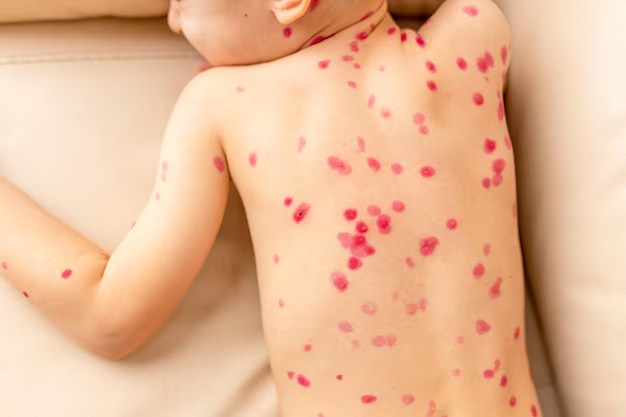Recognizing the Start of Chickenpox: Key Signs and What to Expect
Picture this: your child wakes up one morning with a slight fever, feeling more tired than usual. By noon, they're itching and small red spots begin to appear on their skin. Is it chickenpox? Knowing how to identify the early signs of chickenpox can ease worry, help manage symptoms, and reduce the spread of this contagious infection.
Understanding Chickenpox: An Overview
Chickenpox, caused by the varicella-zoster virus, is a highly contagious disease characterized by an itchy rash and red spots or blisters. Although often a mild condition, especially in children, it can cause serious complications in certain individuals. The infection spreads quickly through respiratory droplets, so identifying its onset is crucial for reducing transmission.
Initial Symptoms to Watch For
Before the telltale spots emerge, chickenpox starts similarly to many viral infections, making it tricky to identify right away. Be on the lookout for the following pre-rash symptoms:
- Mild Fever: One of the first signs, usually ranging from 100 to 102°F (37.7 to 38.8°C).
- Fatigue and Weakness: Increased tiredness or feeling of malaise.
- Loss of Appetite: A decrease in desire to eat.
- Headache: Mild headaches may occur.
These symptoms typically appear 1 to 2 days before the rash begins, so it's easy to confuse them with a common cold or flu.
Spotting the Rash: What Does It Look Like?
The most recognizable sign of chickenpox is its characteristic rash, which evolves through several distinct stages:
1. Red Spots Appear
Initially, small, flat, red spots start to develop, mainly on the face, scalp, and trunk. These spots are a key indicator that the body is battling chickenpox.
2. Blister Formation
Within hours, the spots evolve into fluid-filled blisters (vesicles). These clear blisters on red, round bases are often compared to dewdrops on rose petals.
3. Blister Bursting
These itchy vesicles eventually break, exposing the skin underneath.
4. Crusting Over
Post-bursting, the blisters dry and form scabs over the next several days. The crust stage signifies the healing phase, but new blisters can continue to form for a few days.
The process from red spots to crusty scabs usually takes about a week. During this time, you may notice several stages of the rash on the skin simultaneously.
Understanding Disease Progression
Typical Duration and Recovery
The contagious period of chickenpox starts about 1 to 2 days before the appearance of the rash and continues until all blisters have formed scabs. Generally, recovery from chickenpox takes between 1 to 2 weeks.
Factors Affecting Severity
While chickenpox is often milder in children, adults and individuals with weakened immune systems may experience more severe symptoms or complications, such as pneumonia or skin infections. Factors like age, health status, and vaccination history can influence how someone experiences chickenpox.
Prevention and Management
Preventing chickenpox largely revolves around vaccination and effective management of symptoms if an infection occurs.
The Role of Vaccination
The introduction and widespread use of the varicella vaccine have significantly reduced the incidence of chickenpox. Vaccination not only lowers the chances of catching the virus but also reduces the severity of the disease for those who might still contract it.
Home Care Tips
If you or your child contracts chickenpox, here’s how to ease symptoms:
- Keep the Skin Cool: Reducing body heat helps minimize itching.
- Trim Fingernails: Short nails reduce skin damage from scratching.
- Use Calamine Lotion: This can soothe itchy skin.
- Stay Hydrated and Rested: Adequate fluids and rest support recovery.
When to Seek Medical Advice
While home care can effectively manage mild chickenpox, seek professional advice if:
- The fever lasts more than four days or exceeds 102°F (38.8°C).
- The rash spreads to eyes.
- The rash becomes extremely red, warm, or tender, suggesting a secondary infection.
- You experience breathing difficulties.
Chickenpox Complications: Stay Informed
Recognizing the possibility of complications is essential. Individuals with compromised immune systems, pregnant women, and adults are at a higher risk. Being vigilant and consulting healthcare professionals can ensure timely management and treatment.
Empowerment Through Knowledge
Understanding the signs, symptoms, and progression of chickenpox helps in early identification and management. Empower yourself and those around you by staying informed and acting promptly.
Key Takeaways for Parents and Caregivers
- 📌 Early Symptoms: Watch for fever, fatigue, and loss of appetite as early clues.
- 📌 Rash Progression: Recognize the stages from red spots to blistering and scabbing.
- 📌 Home Care: Use soothing lotions, keep fingernails short, and ensure rest and hydration.
- 📌 Vaccination: Stay updated on vaccinations to reduce risk and severity.
- 📌 Medical Attention: Know when symptoms warrant professional advice.
By being aware and prepared, you can effectively manage chickenpox and minimize its impact. Stay informed, stay vigilant, and prioritize health and well-being.

Related Articles
- Can Adults Get Chickenpox
- Can You Contract Chickenpox From Shingles
- Can You Get Chickenpox Twice
- Can You Get Shingles If You Had Chickenpox
- Can You Get Shingles If You Never Had Chickenpox
- How Chickenpox Transmitted
- How Do You Get Chickenpox
- How Does Chickenpox Spread
- How Long Does Chickenpox Last
- Is Chickenpox Airborne